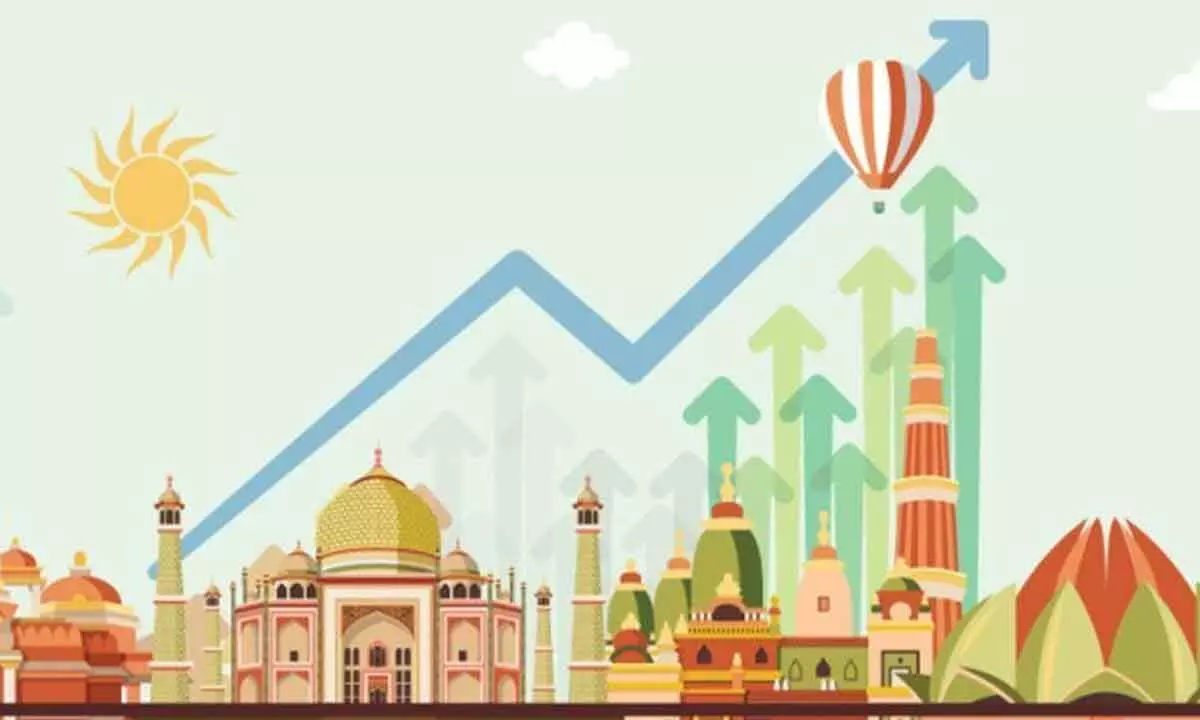Indian tourism is on a fast-growth track
India is poised to become the fourth largest spender on travel by 2030
image for illustrative purpose

The UN World Tourism Organization has recently pointed out that some of the fastest growing outbound tourism markets are India, Indonesia and Vietnam. Likewise, they promote tourism destinations with new vigour, particularly if traditional markets have turned stagnant.
India's outbound tourism market size is expected to reach $60 billion by 2031, growing at a CAGR of 10.9% over the forecast period 2023-2031.
Revenue in the Travel & Tourism market is projected to reach $18.91 bn in 2023 and is expected to show an annual growth rate (CAGR 2023-2027) of 13.47%, resulting in a projected market volume of $31.35 bn by 2027.
"The number of foreign tourists who arrived in India during January-June stood at 43.80 lakh, which is 106 per cent higher than the figure (21.24 lakh) for the corresponding period in 2022. As far as domestic tourism is concerned, the figure stood at 677 million in 2021 and grew to 1,731 million in 2022,” said tourism sources.
Also, according to data shared by them, there has been a growth in foreign exchange earnings for this period in 2023 compared to the corresponding figures last year.
A study claims that India will witness one of the most rapid increases in travel expenditures among the world’s top 10 countries apart from becoming the fourth-largest global spender on travel by 2030.
The country’s travel industry post-Covid has witnessed a huge recovery with travel expenditures being anticipated to reach $410 billion by 2030 compared to $150 billion in 2019. At the same time, Indian travellers are expected to complete around five billion trips annually by 2030, according to the report.
Studying the travel patterns, the report said that about 29 per cent of Indian travellers went on leisure trips exceeding 25 days in 2022, which is higher than other large markets. The study also reveals that the average trip planning time for Indian travellers stood at around 30 days, which is shorter than the second-ranked Japan, where the average is 57 days.
According to research by People Research on India’s Consumer Economy and non-profit think tank India’s Citizen Environment, India’s middle class will nearly double to 61% of its total population by 2047, from 31 per cent in 2020-21. This growth is being nurtured by political stability and economic reforms in the country.
The largest Travel & Tourism market is the ‘Package Holidays’ market with a projected market volume of $8.33 bn in 2023. In the hotels market, the number of users is expected to amount to 61.33 million by 2027. User penetration is 6.7% in 2023 and is expected to hit 9.6% by 2027. The average revenue per user (ARPU) is expected to amount to $198.60. In the Travel & Tourism market, 59% of total revenue will be generated through online sales by 2027. In global comparison, most revenue will be generated in the United States ($190.40bn in 2023).
One of the key drivers of this growing appetite for outbound tourism in emerging markets is the burgeoning middle class. A research by Brookings Institution shows that the middle classes are already the largest spending group in the world. They have grown to 3.8 billion, almost half of the projected world population of 8.4 billion by 2030. On that count, they will account for spending of some $35 trillion every year.
Rising personal income levels and greater accessibility will enable international travel for a greater proportion of India's population. India's sizable global diaspora and international student body will continue to be a pull factor for visiting friends and relatives. In addition, the affluent traveller will seek first-class, personalized experiences that exude cachet.
Business travel will expand in line with commercial interests, with the meetings, incentives, conferences and exhibitions segment (MICE) offering the greatest prospects. The next generation of Indian travellers will be younger, more gender-specific, and less likely to travel in multigenerational family groups. By 2031, an estimated 50 million Indians will travel overseas. The top 32 countries included in the report are: Singapore, Thailand, United States, Australia, China, Japan, New Zealand, Sri Lanka, Taiwan, Bhutan, Nepal, Cambodia, Mauritius, United Kingdom, Canada, Maldives, Switzerland, Philippines, Myanmar, Malaysia, Turkey, Oman, Qatar, United Arab Emirates, Bahrain, Saudi Arabia, Kuwait, Egypt, Germany, Italy and the Netherlands.

